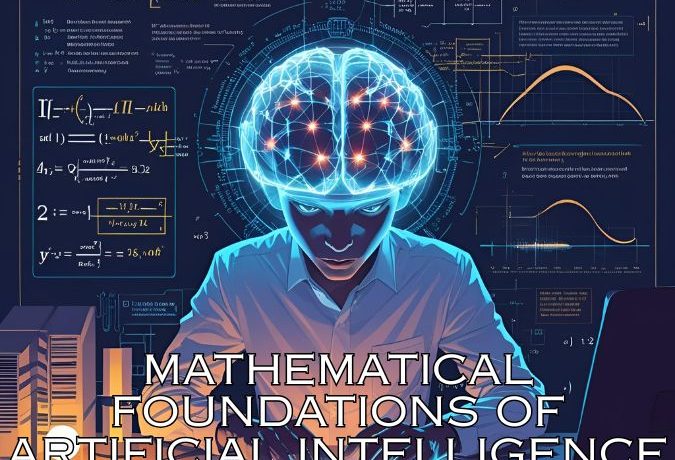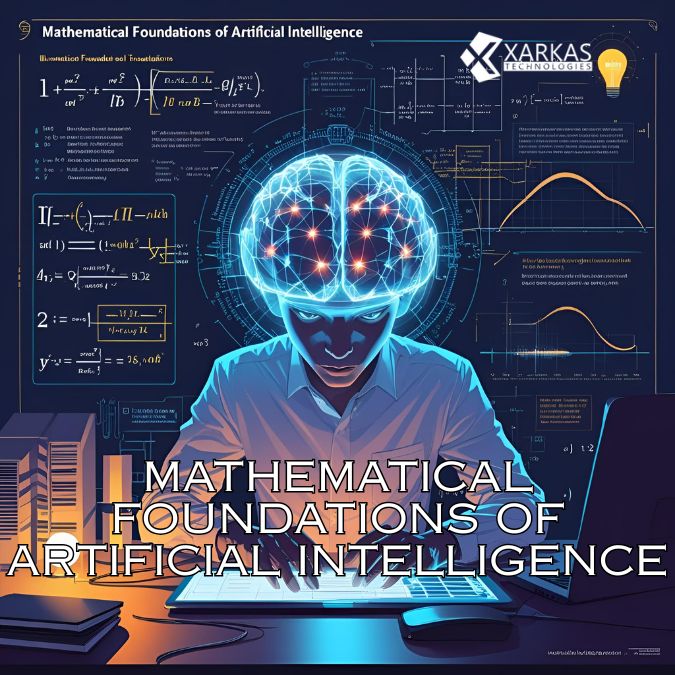
Mathematical Foundations of Artificial Intelligence NSF
Introduction
When people think about artificial intelligence, they often picture smart robots, self-driving cars, or voice assistants. But behind the scenes of every AI breakthrough lies a powerful engine: mathematics. Without mathematical concepts like probability, calculus, and linear algebra, AI as we know it wouldn’t even exist.
Table Of Content
- Introduction
- The Importance of Mathematics in AI
- Mathematics: The Backbone of AI Algorithms
- Why AI Needs Strong Mathematical Grounding
- Key Mathematical Disciplines Behind AI
- Linear Algebra
- Matrices and Vectors in Machine Learning
- Applications in Neural Networks
- Probability and Statistics
- Bayesian Inference and Uncertainty
- Modeling Real-World Data
- Calculus
- Gradients and Backpropagation
- Optimization in Deep Learning
- Discrete Mathematics
- Graph Theory and Logic
- Combinatorics in AI Algorithms
- ⚙️ Optimization Theory
- Convex and Non-Convex Optimization
- Gradient Descent Methods
- NSF’s Strategic Role in AI Research
- Overview of NSF’s AI Initiatives
- NSF-Funded Research Projects
- ️ Real-World Applications Rooted in Math & AI
- Training the Next Generation of AI Researchers
- Challenges in Mathematical AI Research
- The Future of AI and Mathematics
- Conclusion
- ❓FAQs
That’s where the National Science Foundation (NSF) steps in. The NSF isn’t just funding robots; it’s powering the very mathematical foundations that make AI intelligent. Through its strategic programs and research grants, the NSF is nurturing the deep math required to unlock the next generation of AI capabilities.
The Importance of Mathematics in AI
Mathematics: The Backbone of AI Algorithms
AI isn’t just about coding. At its heart, it’s about understanding data, making predictions, and optimizing outcomes—all of which are mathematical problems. Math is the blueprint; AI is the structure.
Why AI Needs Strong Mathematical Grounding
Think of AI as a skyscraper. Math is the concrete, the steel beams, the architectural plan. Without it, your tower of intelligence crumbles. From recognizing faces to generating human-like text, it’s all math in disguise.
Key Mathematical Disciplines Behind AI
Linear Algebra
Matrices and Vectors in Machine Learning
Every image, every word embedding, every neural net layer is ultimately a matrix or vector operation. These aren’t just numbers—they’re the DNA of AI.
Applications in Neural Networks
Neural networks thrive on matrix multiplication. Weights, activations, and inputs? All manipulated via linear algebra magic.
Probability and Statistics
Bayesian Inference and Uncertainty
AI must deal with uncertainty. Bayesian methods help AI systems make reasoned guesses in the face of incomplete data.
Modeling Real-World Data
Statistics help AI make sense of noise. It answers the core question: “Is this pattern real or just random?”
Calculus
Gradients and Backpropagation
Training a neural network? You’re calculating gradients and derivatives to adjust weights—a core concept in calculus.
Optimization in Deep Learning
Finding the “best” model means minimizing a loss function. Calculus guides us through these optimization landscapes.
Discrete Mathematics
Graph Theory and Logic
Search engines, recommendation systems, even social networks rely on graph-based AI. Think nodes, edges, shortest paths.
Combinatorics in AI Algorithms
From decision trees to game theory, combinatorial logic helps AI explore possibilities and make strategic choices.
⚙️ Optimization Theory
Convex and Non-Convex Optimization
Solving AI problems is often about finding the best solution from many—optimization theory lights the way.
Gradient Descent Methods
The workhorse behind most learning algorithms. It’s how AI “learns” by descending along a curve towards minimal error.
NSF’s Strategic Role in AI Research

Overview of NSF’s AI Initiatives
The National Science Foundation is a major player in AI development. Their mission? Support foundational, interdisciplinary, and use-inspired research—especially where math and AI intersect.
From the NSF AI Research Institutes to dedicated AI seed funding, NSF ensures research isn’t just tech-focused—it’s mathematically rigorous too.
NSF-Funded Research Projects
These projects range from AI-powered climate models to new theoretical frameworks in machine learning. NSF backs interdisciplinary teams blending math, computer science, and even social sciences.
Some groundbreaking projects include:
-
Mathematical frameworks for safe and fair AI
-
Advanced stochastic models for decision-making
-
Exploration of algebraic geometry in deep learning
️ Real-World Applications Rooted in Math & AI
Math isn’t just theory—it drives AI tools we use daily.
-
Healthcare: AI detects diseases using statistical pattern recognition
-
Finance: Algorithms predict market trends using time-series analysis
-
Robotics: Navigation systems rely on graph theory and geometry
-
Language models: NLP leverages probabilistic grammar models
-
Computer vision: Image recognition uses matrix decomposition techniques
All this is made possible thanks to deep mathematical structures.
Training the Next Generation of AI Researchers
NSF doesn’t stop at funding projects—they’re investing in people.
-
Graduate Research Fellowships
-
Undergraduate STEM scholarships
-
AI-focused interdisciplinary curricula
By encouraging math-driven AI education, NSF ensures that the next wave of scientists isn’t just tech-savvy—they’re mathematically fluent.
Challenges in Mathematical AI Research
While the field is booming, challenges remain:
-
Explainability: Math-heavy AI models are often black boxes. How do we interpret them?
-
Theoretical Gaps: Some AI advancements are outpacing the math that explains them.
-
Ethical Complexity: Math can model fairness, but applying it to real-world ethics is tricky.
NSF funds research that bridges these gaps, ensuring AI is safe, accountable, and understood.
The Future of AI and Mathematics
As AI grows, so does its need for mathematical innovation. Expect to see:
-
More use of topological data analysis
-
Deeper integration of category theory in neural networks
-
New breakthroughs in probabilistic programming
The future isn’t just AI—it’s math-infused AI built by researchers funded by organizations like NSF.
Conclusion
Mathematics is the true brain behind artificial intelligence. While flashy applications grab the spotlight, the formulas, theorems, and proofs quietly power every step forward. And thanks to the National Science Foundation, the U.S. is leading the charge in funding the next generation of mathematical minds shaping AI.
So next time you talk to a chatbot or watch a self-driving car—remember: that’s math, working hard behind the curtain.
❓FAQs
1. What role does NSF play in AI advancement?
The NSF funds foundational research in AI, especially in mathematical sciences, to ensure theoretical and practical breakthroughs.
2. How important is linear algebra in AI?
It’s essential—almost all machine learning and deep learning models rely on matrix and vector operations rooted in linear algebra.
3. Can AI be developed without deep mathematical knowledge?
You can build simple models, but for innovative and reliable AI, strong math knowledge is non-negotiable.
4. What kind of math do AI researchers use daily?
Linear algebra, calculus, probability, statistics, and optimization are part of daily work for AI professionals.
5. How does NSF support AI in education?
Through scholarships, fellowships, research grants, and curriculum development for K-12, undergraduates, and Ph.D. students.







No Comment! Be the first one.